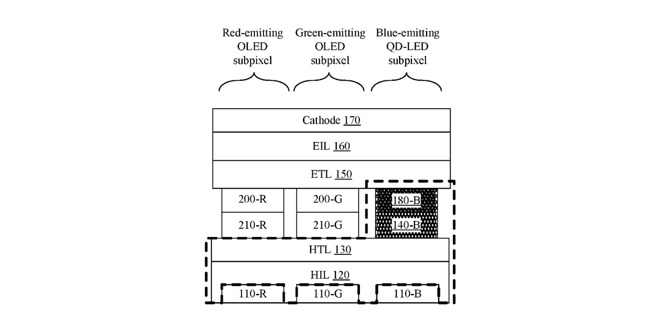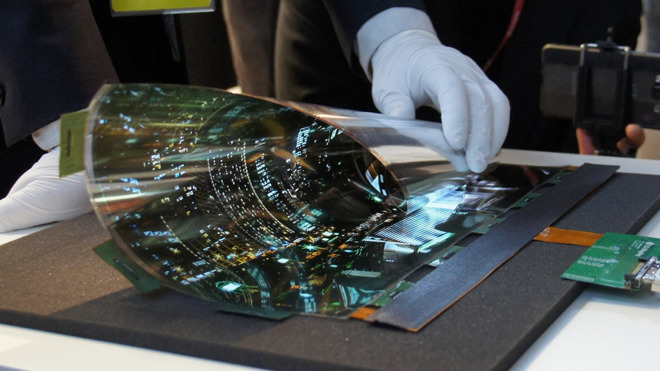Future Apple devices could merge the enhanced power efficiency of quantum dot LED and speed of response of OLED screens in one unit, offering the best of both worlds in terms of battery life and image quality.

Apple's proposed invention, entitled "Quantum Dot LED and OLED Integration for High Efficiency Displays," was published by the U.S. Patent and Trademark Office this week. The innovation described breaks down elements in a single pixel into subpixels, with aspects of both technologies in one pixel group, to in part fuse the technologies into a hybrid display.
But, given the state of the technologies, it is not clear when -- or if -- the hybrid will see the light of day, or if it is even practical.
OLED is the obvious evolution from LCD

OLED displays have a greater contrast ratio, and superior overall color display to LCD. The flexible displays prevalent at recent trade shows are a product of OLED development.
A traditional LCD screen is considered transmissive -- individual elements change color, but are at the mercy of assorted backlight technologies for presentation. OLED screens are emissive, meaning that each individual pixel is its own light source with brightness being able to be set per pixel.
As a result, OLED technology also has significant power efficiency improvements over LCD screens. For instance, a black pixel consumes no power --this also opens up other utilizations of an OLED screen, such as only using a small portion of it for a constant time and notification display, with minimal impact to battery life.
Without the need for a backlight, an OLED screen can be thinner than competing technologies, all other factors equal. OLED response times can theoretically reach 0.01 milliseconds, versus 1 millisecond for modern LCD screens.
Production is more complicated than LCD, with even a speck of dust completely ruining a screen during initial fabrication. The cost to construct each screen still exceeds that of an LCD.
Water impingement is a major problem for OLED screens both during production, and in-use. Even a small amount of water contacting the organic substrate of the screen can immediately damage the display, necessitating replacement.
QD is next, but still in the future
Apple's implementation of quantum dot appears to be a true quantum dot (QD), different from the current commercial implementation of the screen. As with OLED, light is emitted on demand in true QD and the complete technology is seen as the successor to OLED at some point in the future.
While Quantum LED televisions exist now, the technology is being used to improve the backlight, and isn't being used on the pixel level -- yet.
True QD swaps the photoluminescent quantum dots behind a conventional LED or the organic element in an OLED screen for electroluminescent nanoparticles, which emit the light themselves.
Advantages of the technology over OLED include longer life, better saturated green colors, a thinner display than even OLED, and a more streamlined manufacturing process than OLED when the technique is perfected. Plus, true QD displays can produce displays at up to 1000 pixels per inch.
Response times for QD displays are closer to that of LED, so a hybrid display would adopt the OLED speed.
Combined OLED and true QD stack for one pixel
When could the hybrid appear?
While QLED televisions with a quantum dot backlight are available now, true QD displays only exist in the lab. Apple has certainly seen the development, and has a hand in its development.
Apple's patent application discusses the challenges of developing a hybrid display, and has more to do with the production of them, then the actual use. The application isn't clear about actual usage of the displays produced, but does briefly touch on the fact that the combined fabrication is complex, and not entirely worked out yet.
Not clear is if Apple's quest in a combined screen comes before or after homogenous QD displays arrive. It appears Apple is gambling for the future with the application, and betting on a need to improve the response time of the technology before something new comes down the pipeline.
The relative thickness of QLED technology in televisions isn't well suited for small screens, as compared to OLED -- with the vast majority of the users demanding thinner and thinner screens on their smartphones. True QD is notably thinner than QLED, as is OLED, and the two technologies, properly integrated, can complement each others weaknesses.